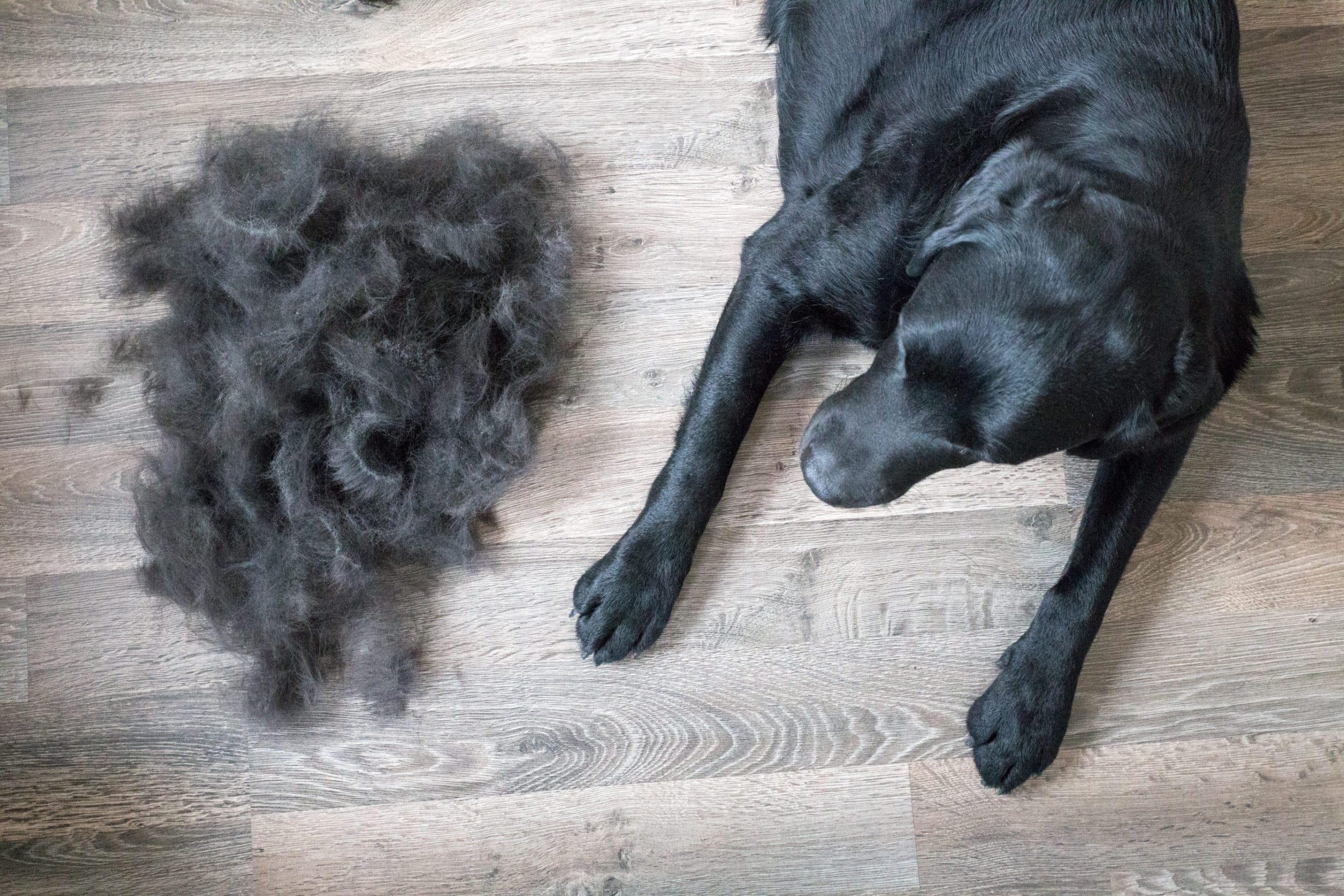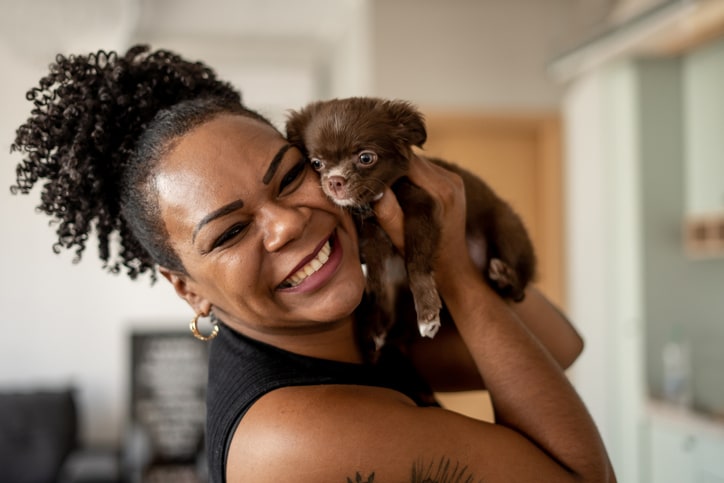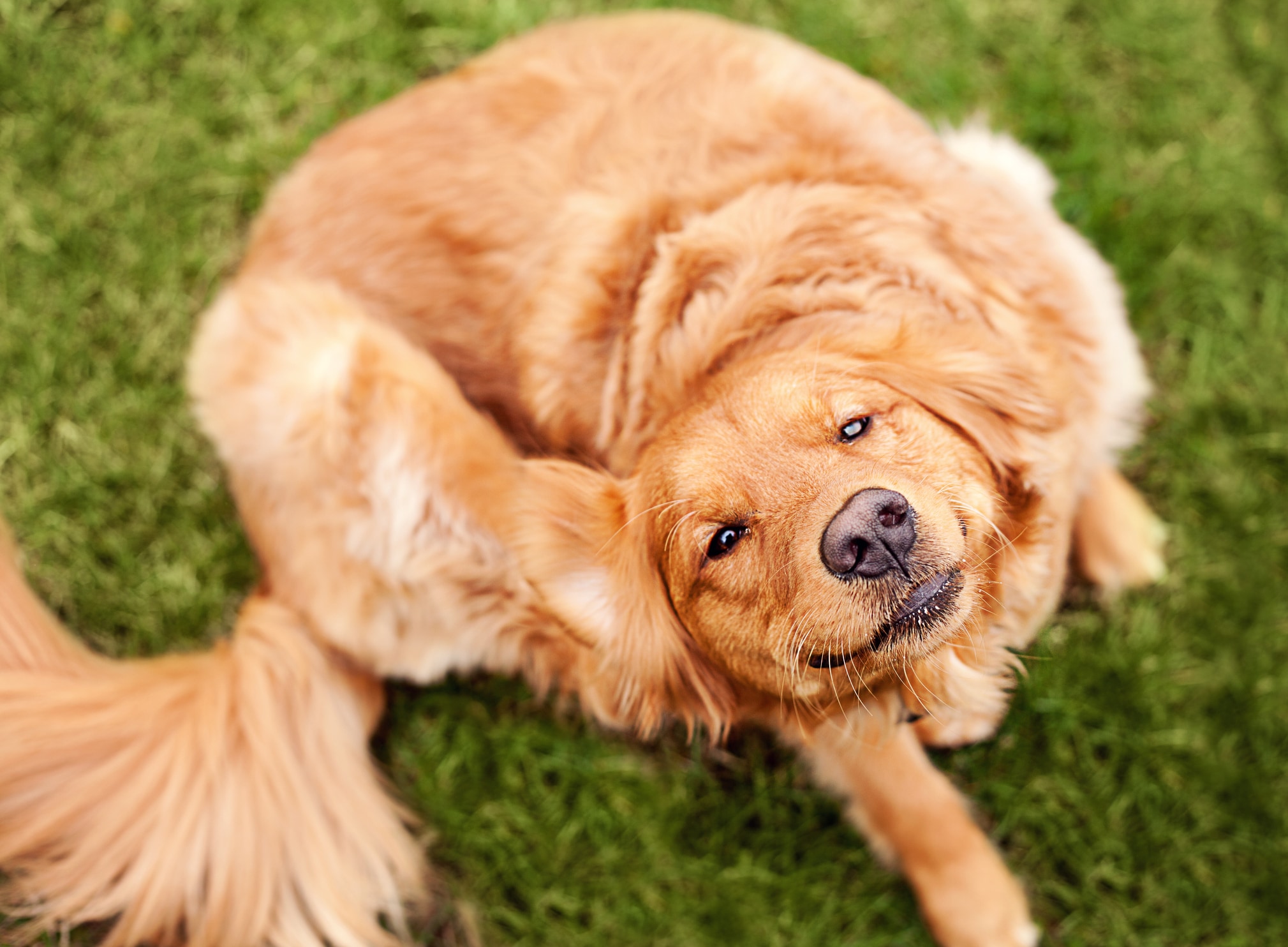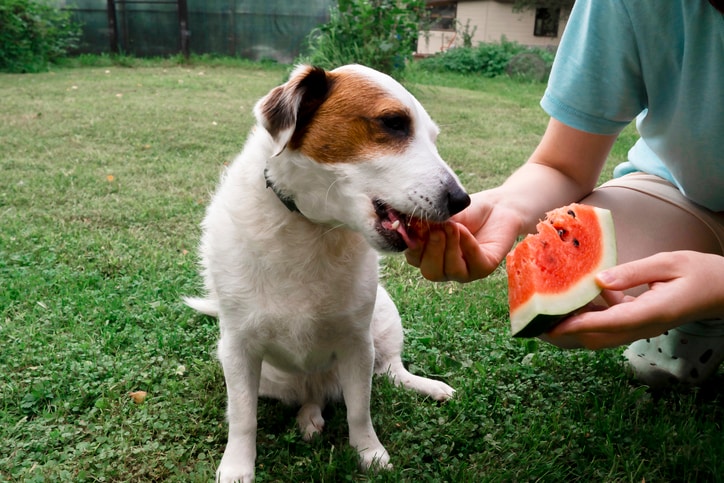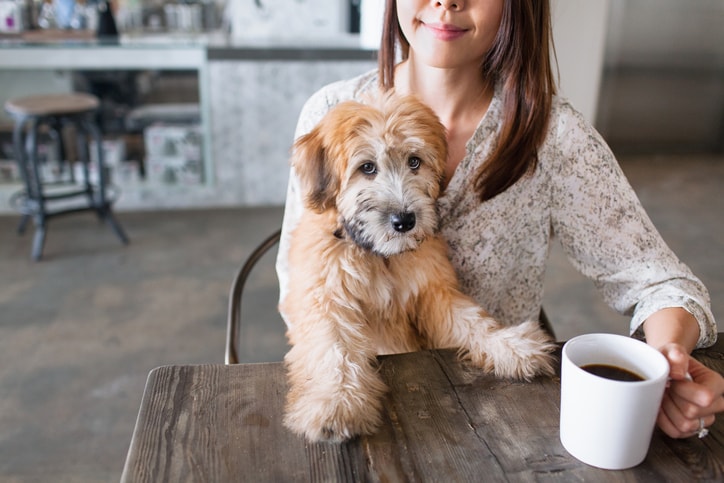Between their wet kisses and mealtime messes, it’s hard not to notice how much of your day is spent cleaning up dog drool. But if your pup suddenly seems to be drooling more than usual, you may suspect their slobber could be spelling out something serious.
“Drooling is a common trait among many dog breeds, but it can vary significantly from one pooch to another. While some dogs may leave puddles wherever they go, others may rarely drool at all,” says Dr. Josh Smith, small animal veterinarian and owner of Pawspital Animal Hospital in Meridian, Idaho.
“If you’re a dog owner, especially of a breed known for its drooling tendencies, you might find yourself wondering about the reasons behind this behavior, when it might indicate a health issue and how to manage it in daily life,” he adds. Hoping to decode your dog’s drool — or learn how to deal with it? Read on for more insights from veterinary experts.
Why do dogs drool?
All dogs drool to some extent, though it’s more noticeable in some breeds than others. Normally, your dog’s saliva keeps their mouth comfortably lubricated and protects their dental health, as it contains antimicrobial agents that help keep bad breath and oral infection at bay.
According to Dr. Joanne Fernandez-Lopez, veterinarian and director of veterinary affairs at ABCs Puppy Zs, hypersalivation, or increased saliva production, can serve several purposes:
- Keeps your dog cool. Dogs don’t sweat like humans do, so they rely on the evaporation of moisture from their tongue to cool down. In hot weather or while playing, they produce excess saliva to help facilitate self-cooling.
- Helps your dog prepare to eat. In anticipation of a meal, your dog will produce more saliva, which contains enzymes that can kick-start the digestive process and moisten food so it’s easier to swallow.
- As a response to overstimulation. Some dogs drool when they’re anxious, stressed, or excited.
“Certain dog breeds are naturally predisposed to drooling due to their physical characteristics. Breeds with loose, pendulous lips and jowls tend to drool more.”
—Dr. Joanne Fernandez-Lopez, veterinarian
Why is my dog drooling so much?
When it comes to certain breeds, some dogs were born to drool. Veterinarians explain that drooling is not a feature, but a benign side-effect of selective breeding.
“Certain dog breeds are naturally predisposed to drooling due to their physical characteristics,” explains Fernandez-Lopez. “Breeds with loose, pendulous lips and jowls tend to drool more.” Some examples of dogs more likely to drool a lot include:
- Saint Bernard.
- Newfoundland.
- Mastiff breeds.
- Bloodhound.
- Basset hound.
- English bulldog.
- French bulldog.
- Great Dane.
According to the American Kennel Club, scent-tracking breeds like the Basset hound rely on the flopping folds around their ears and jowls to sweep and trap odor particles close to their nose. Those wonderful wrinkles just happen to double as drool ducts.
Why is my dog suddenly drooling more?
While drooling is a normal part of life for droopy-faced breeds, others may only experience excessive saliva production only in certain situations. Naturally, you might notice your dog drooling as you prepare their meals, but unexplained dribbling could be a sign that your dog is in distress, explains Fernandez-Lopez.
Unexplained drooling may indicate:
- Nausea.
- Anxiety.
- Dental issues.
- Overheating.
- Neurological disorders.
- Medication side effects.
- Poisoning/toxicity.
Occasional drooling, especially if the cause is obvious, like anxiety during a car trip or nausea after a dietary indiscretion, is probably not a concern. When accompanied by other unusual symptoms, though, drooling may indicate a serious health issue.
When should you see your vet about drooling?
Like any sudden, unexplained change in your dog’s habits, drooling can sometimes be a sign that it’s time to see your veterinarian. See your vet as soon as possible if you notice any of the following concurrent signs:
- Bloody or discolored saliva.
- Pungent odor.
- Pale gums.
- Bright red gums.
- Change in eating habits.
- Lethargy.
According to the Merck Veterinary Manual, excessive salivation can be a sign of inflammation of the mouth, tongue or throat. There may be a foreign body in your dog’s mouth, like a piece of a stick stuck in their gums. It can also happen if your dog has an oral infection or abscess, which may be indicated by facial swelling, odor or bleeding.
“Since dogs cannot share when they are nauseous, not eating and drooling can be some of our best indicators.”
—Dr. Sam McDonald, medical director at Veterinary Emergency Group Cedar Park
Drooling can also be a sign of nausea, notes Dr. Sam McDonald, medical director at Veterinary Emergency Group (VEG) Cedar Park. It might be accompanied by other symptoms like excessive licking, inappetence or stomach gurgling. “Since dogs cannot share when they are nauseous, not eating and drooling can be some of our best indicators that a dog is nauseous before actually getting to the point of vomiting.”
“Unfortunately, nausea can happen for many different reasons, and a lot of the time, it takes a good history, physical exam and possibly some diagnostics to narrow down the long list of causes,” McDonald adds.
How do you deal with a dog that drools a lot?
For drooly dogs with no medical cause, a little slobber is inevitable. Veterinarians recommend doing your best to keep your pup clean and dry.
Carry a drool catcher
“Have a clean washcloth ready to help soak up the drool regularly, especially after drinking or eating. If you go outside for play or exercise, it might be a good time to have a clean washcloth ready, as panting may produce more drool as your pup tries to regulate its temperature.” says McDonald. “I have seen some individuals use a bandana as a drool catcher, but if you do this, change and clean the bandana regularly so it doesn’t start to irritate the skin on the neck.”
Invest in furniture covers or cleaning wipes
Along with using drool bibs or bandanas to catch drool, Fernandez-Lopez recommends using washable furniture covers to protect household surfaces and keeping cleaning wipes handy. Making sure your dog drinks plenty of water can help manage salivation triggered by dehydration.
Keep your dog’s skin clean and dry
Smith adds that excessive moisture plus loose skin can become a recipe for overgrowth of pathogens that can cause skin issues. “While drooling is not just messy, it can lead to other issues, including skin irritation from constant contact with saliva, which can cause redness or sores, and bacterial infections if the skin becomes compromised.”
The bottom line
Drooling can be triggered by food, anxiety, excitement or overheating. In some cases, it can be a sign of a health issue like dental infection or nausea. Daily drooling is normal for many dogs, especially breeds with floppy jowls. Smith reminds pet parents that drool is a part of your dog’s charm.
“If you ever feel overwhelmed by your dog’s drool, just remember: a drooly dog is just trying to express their love… in the most slobbery way possible,” Smith says. “If you have any concerns about your dog’s drooling habits, don’t hesitate to reach out to your veterinarian for guidance.”

